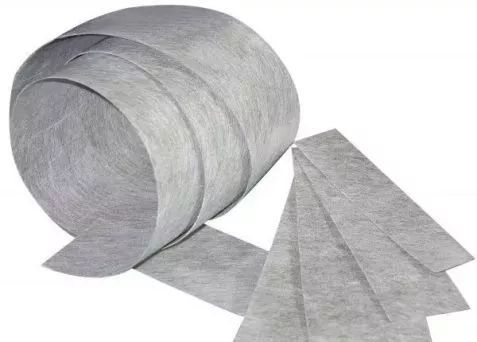What Are Composite Materials?
Composite materials are made from two or more different materials that, when combined, have better properties than the individual components. These materials may include fibers, particles, or sheets. All of these are bonded together by a matrix material. By combining different materials, composite materials can be tailored to provide specific characteristics such as high strength, stiffness, durability, and low weight, along with resistance to corrosion. These advantages make composites suitable for many different uses, particularly in aerospace, automotive, construction, and sports equipment.

Types of Composite Materials
Common types of composite materials include:
- Carbon Fiber Reinforced Polymer (CFRP): Known for its lightweight yet high strength, CFRP is widely used in aerospace and automotive industries.
- Glass Fiber Reinforced Polymer (GFRP): GFRP offers excellent durability and resistance to environmental conditions, commonly used in construction and marine applications.
- Ceramic Matrix Composites (CMC): These are ideal for high-temperature applications and are often used in industries such as aerospace and defense.
Composite Materials Manufacturing Processes
There are various methods to manufacture composite materials. Each method has its own advantages and is suited to different applications. The main manufacturing processes include:
Open Mold Processes
Wet Lay-Up: In this method, wet composite materials are manually layered onto a mold to create durable and lightweight parts. It's commonly used in the production of boat hulls, automotive parts, and aerospace components. The process allows for precise control over the layer thickness and orientation, making it suitable for small to medium production runs.
Spray Lay-Up:
Spray Lay-Up: This technique involves using a spray gun to apply a mixture of resin and short-cut fibers onto a mold. It is fast, efficient, and highly automated, making it ideal for mass production. Spray lay-up is widely used in industries such as automotive, aerospace, and construction for parts that require high strength and low weight.
Automated Tape Laying (ATL):
Automated Tape Laying (ATL): ATL uses computer-controlled machines to place composite strips or tapes layer by layer on a mold. This process is highly automated, reducing waste and enabling high-efficiency production. ATL is popular in the aerospace, automotive, and defense industries.
Fiber Winding:
Fiber Winding: This process involves wrapping resin-soaked fibers (such as carbon fiber or fiberglass) around a rotating mandrel to form hollow or solid cylindrical structures. It is commonly used for high-strength composite products in the aerospace, automotive, and defense industries, where high performance is critical.
Closed Mold Processes
Autoclave Molding: Autoclave molding uses a pressure vessel (autoclave) to cure composite materials under high temperature and pressure. This process produces parts with excellent strength and durability, ideal for aerospace, defense, and automotive applications.
Vacuum Infusion:
Vacuum Infusion: In this process, vacuum is applied to pull resin into pre-placed dry reinforcement fibers, ensuring that the resin is spread evenly and that the right amount of resin is used for each fiber. Vacuum infusion is used for producing large composite parts with high strength-to-weight ratios, commonly in marine and automotive industries.
Vacuum Bag Molding:
Vacuum Bag Molding: Similar to vacuum infusion, this method uses a vacuum to compress dry fibers against a mold while resin is added to form the final part. This method is widely used for lightweight, high-strength parts for aerospace and automotive applications.
Compression Molding:
Compression Molding: In this process, a pre-measured mixture of resin and reinforcement fibers is placed into a mold, which is then closed and heated under pressure. Compression molding is used to make strong, durable composite parts with complex shapes. These parts are used in the automotive and aerospace industries.
Resin Transfer Molding (RTM):
Resin Transfer Molding (RTM): RTM uses a closed mold into which pre-measured resin and reinforcement fibers are injected under pressure. This method is ideal for mass-producing high-performance composite parts in industries like automotive, aerospace, and marine.

Advantages of Composite Materials
Composite materials have many advantages. This makes them essential in various industries. Some of the key benefits include:
- High Strength-to-Weight Ratio: Composites are lightweight yet offer superior strength, making them ideal for aerospace, automotive, and sports equipment applications.
- Customizability: The composition and manufacturing processes of composites can be tailored to meet specific requirements, enabling custom products for various industries.
- Corrosion Resistance: Composites naturally resist corrosion, making them ideal for harsh environments such as marine and offshore applications.
- Durability: Composite materials withstand extreme conditions, including temperature fluctuations, chemical exposure, and UV radiation, extending product lifespan.
- Design Flexibility: Composite materials can be molded into complex shapes and structures, providing designers with greater freedom and innovation opportunities.
- Cost Efficiency: Despite higher initial production costs, composites often result in lower long-term costs due to their durability, low maintenance needs, and reduced overall weight.
Conclusion
Composite materials are very important in many industries. They work better and cost less than traditional materials. If manufacturers and engineers understand how these materials are made and their strengths, they can make better choices about which materials to use and how to design things. In industries like aerospace, automotive, construction, and marine, composites can help with high-performance needs.
